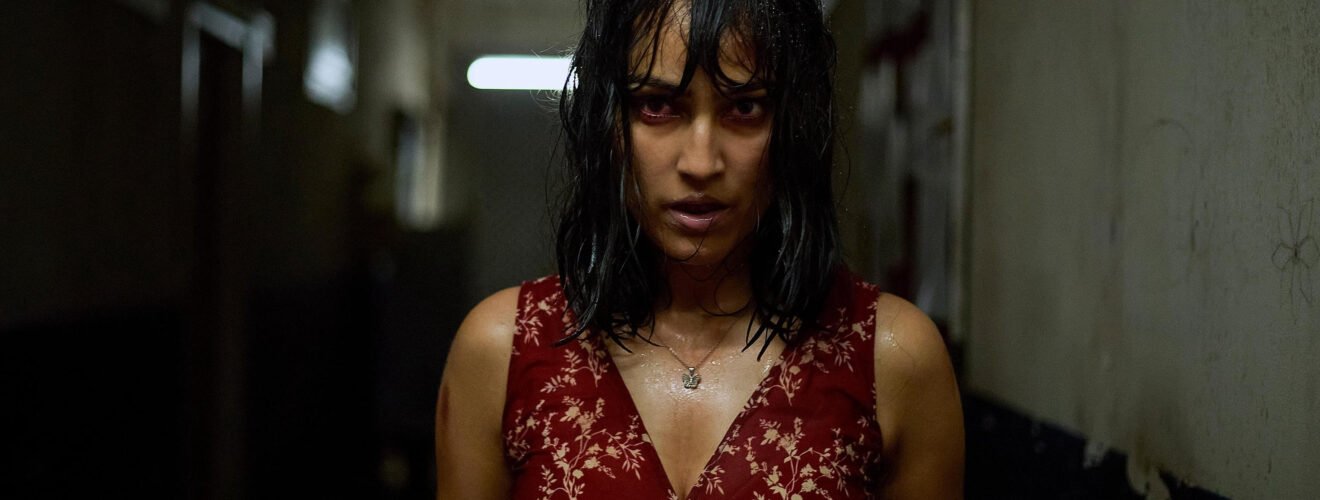Khauf Delivers Horror Rooted in Real-World Trauma

Khauf, a Hindi-language web series that premiered in April 2025 on Prime Video, offers more than just the typical scares found in conventional horror. Created by Smita Singh and directed by Pankaj Kumar and Surya Balakrishnan, this psychological thriller unravels its tale through a blend of fear, trauma, and societal truths. With eight episodes, each approximately 40 minutes long, Khauf immerses viewers into a haunting experience that is as emotional as it is eerie.
Plot Summary: A Haunting That Begins Within
The story centers around Madhuri, a young woman from Gwalior, portrayed by Monika Panwar. Seeking independence and a new beginning, she moves into a women’s hostel in Delhi. However, her stay turns disturbing when she is assigned to Room 333—an ordinary space with an ominous energy that begins to disrupt not only her life but also that of other women in the building.
As the narrative unfolds, Madhuri experiences a series of supernatural occurrences, visions, and personal breakdowns. However, the true horror goes beyond flickering lights or ghostly shadows. The room becomes a symbol of repressed trauma, institutional neglect, and generational pain carried by women in patriarchal societies. The hauntings in Khauf feel internal, psychological, and deeply personal—rooted in the very fabric of cultural silence around abuse and mental health.
Themes: Patriarchy as the Real Monster
Khauf stands apart from typical horror shows by shifting its focus away from external ghouls and ghosts. Instead, the series explores fear that resides within—the kind shaped by past trauma, familial abuse, and societal expectations.
Room 333 becomes a powerful metaphor. It does not merely contain a spirit but holds the weight of unresolved pain passed down from one generation of women to another. Through subtle narrative cues, the series highlights how women are often gaslit, ignored, or manipulated, even in environments that claim to protect them.
One of the recurring motifs is silence—how society encourages women to keep their traumas hidden to maintain familial honor or avoid being labeled unstable. This layered commentary gives Khauf an intellectual and emotional depth not often found in mainstream horror.
Performances: Anchored by Intensity and Subtlety
Monika Panwar, as Madhuri, delivers a career-defining performance. Her portrayal of a woman on the edge of unraveling feels authentic, raw, and nuanced. She communicates pain, confusion, and eventual empowerment without ever slipping into melodrama.
Rajat Kapoor, who plays Hakim—a manipulative ritualist operating in Old Delhi—creates a chilling character that embodies the real-world predators who disguise exploitation under the guise of spirituality or healing. His presence brings a terrifying reality into a world already thick with psychological dread.
Geetanjali Kulkarni plays a troubled police officer battling alcoholism and her own unresolved trauma. She is both a protector and a victim, navigating a system that often dehumanizes those it is meant to protect. Her subplot adds another layer to the show’s central theme: how institutions fail the vulnerable.
Supporting performances by Shilpa Shukla, Abhishek Chauhan, Chum Darang, Shalini Vatsa, Gagan Arora, Priyanka Setia, Aasheema Vardhan, and Rashmi Mann elevate the narrative. Each actor brings emotional weight and realism to their roles, making the hostel feel like a living, breathing community haunted by shared history.
Visuals and Sound Design: Dread by Design
The cinematography in Khauf leans heavily into atmospheric tension. Darkened hallways, narrow corridors, and tight framing create a claustrophobic feeling that mirrors the psychological constriction experienced by Madhuri. The use of shadows and minimal lighting doesn’t just serve aesthetics—it reinforces the idea that much of the fear lies in what is unseen.
The sound design enhances this unease. Instead of relying on jump scares or loud stingers, the series uses ambient sounds—creaking floors, whispers, distant sobs—to keep the audience on edge. The background score remains understated, allowing the narrative and visuals to build tension naturally.
Critical Reception: Praised for Its Bold Themes
Critics have responded positively to Khauf, especially for its genre-defying storytelling and thematic richness. Many reviews note how the series merges horror with real-life issues such as gendered violence, emotional suppression, and mental health.
The Times of India described the series as ambitious, praising its strong performances and its attempt to redefine what horror can mean in a culturally relevant context. However, some reviewers felt that the pacing could have been tighter, especially in the mid-episodes where the plot slows to focus on subplots.
India Today called Khauf a courageous show, applauding its refusal to rely on clichés like haunted dolls or ghostly apparitions. Instead, the review emphasized how the show’s horror came from societal dysfunction—how patriarchal structures oppress and traumatize women in ways that are far more terrifying than fictional ghosts.
Hindustan Times focused on the emotional depth of Monika Panwar’s portrayal, calling it one of the most powerful performances in the psychological horror genre in recent years. The outlet also pointed out that Khauf doesn’t aim to entertain with fear, but rather to provoke empathy and reflection.
Audience Response: Divided but Engaged
Viewer reactions have varied. Many viewers praised the series for tackling uncomfortable themes with grace and honesty. They appreciated the show’s slow-burn pacing and thoughtful approach to horror, comparing it favorably to international psychological dramas.
However, some viewers expressed a desire for more traditional horror thrills. For those expecting classic supernatural elements or fast-paced storytelling, the series felt more like a psychological drama with horror aesthetics rather than a pure horror story. That said, even the critics of the show acknowledged the strength of its acting and message.
Online discussions have centered around the show’s portrayal of trauma, with many viewers sharing personal stories and reflections on how the series mirrors real-world issues. This level of emotional engagement highlights the impact of Khauf beyond entertainment.
Conclusion: Horror That Lingers Beyond the Screen
Khauf is not just a horror show—it is a social critique wrapped in haunting visuals and brilliant performances. It challenges the notion that monsters only exist in the dark. Instead, it argues that society itself can be a breeding ground for lifelong fear.
By blending real-life horror with psychological unease, Khauf breaks new ground in Indian web series storytelling. It prioritizes empathy over thrills, substance over spectacle. The show may not satisfy every horror fan’s appetite for scares, but it offers something far more lasting—a confrontation with the kind of fear that doesn’t vanish when the lights turn on.
In a market flooded with formulaic content, Khauf dares to be different. It speaks softly, but its message echoes loudly. It invites viewers not just to watch, but to feel, think, and perhaps even heal.













